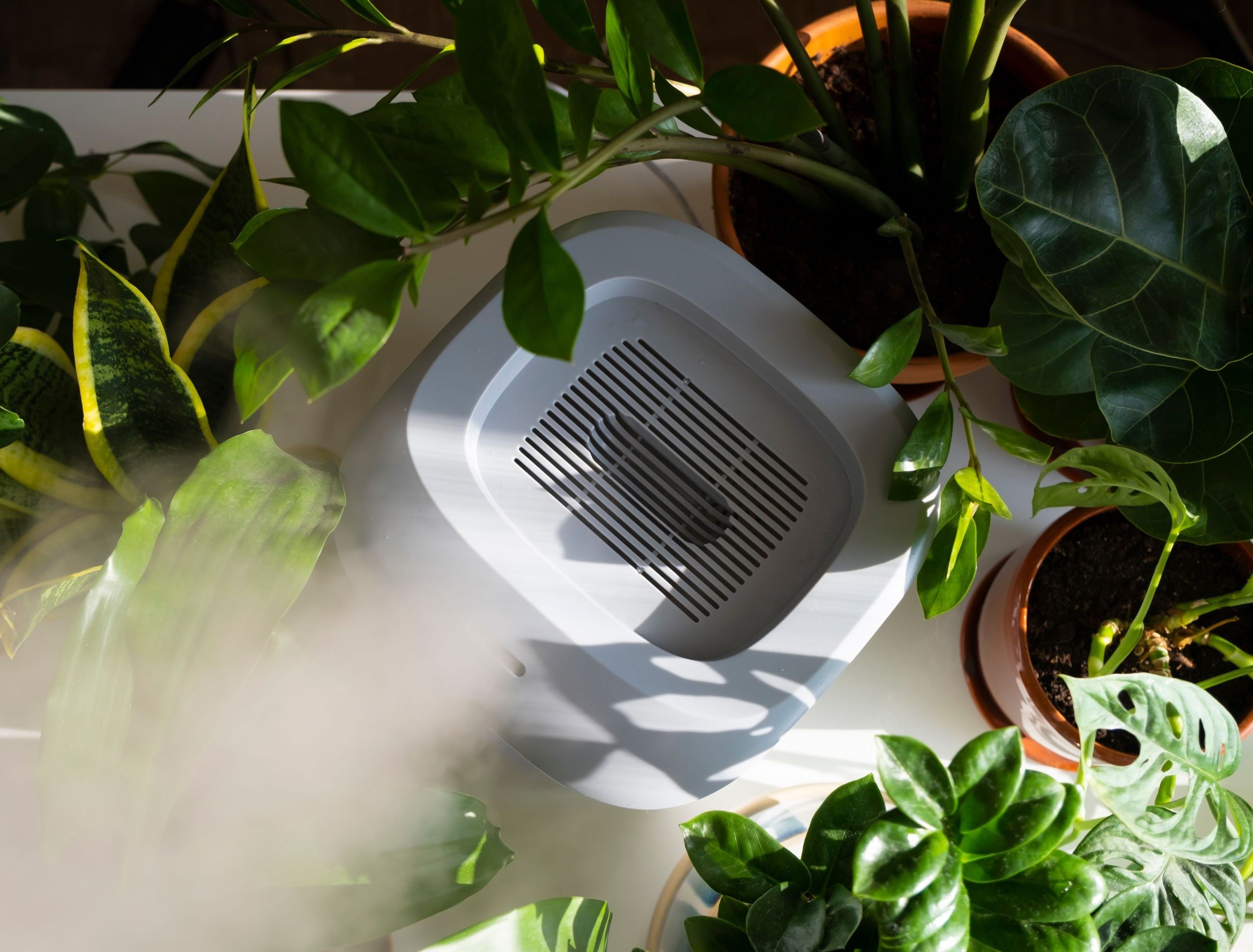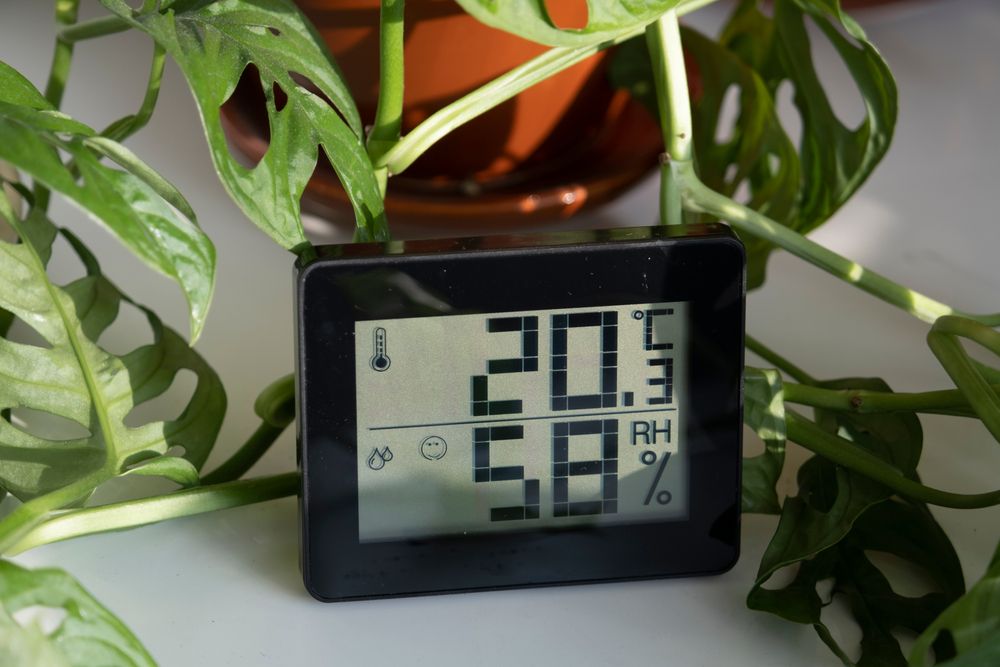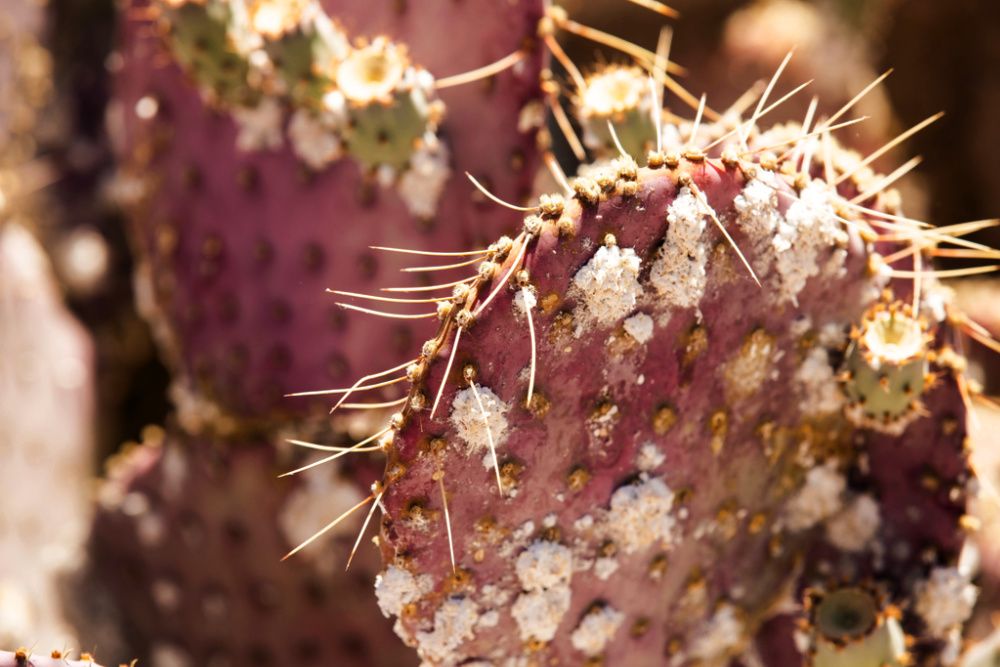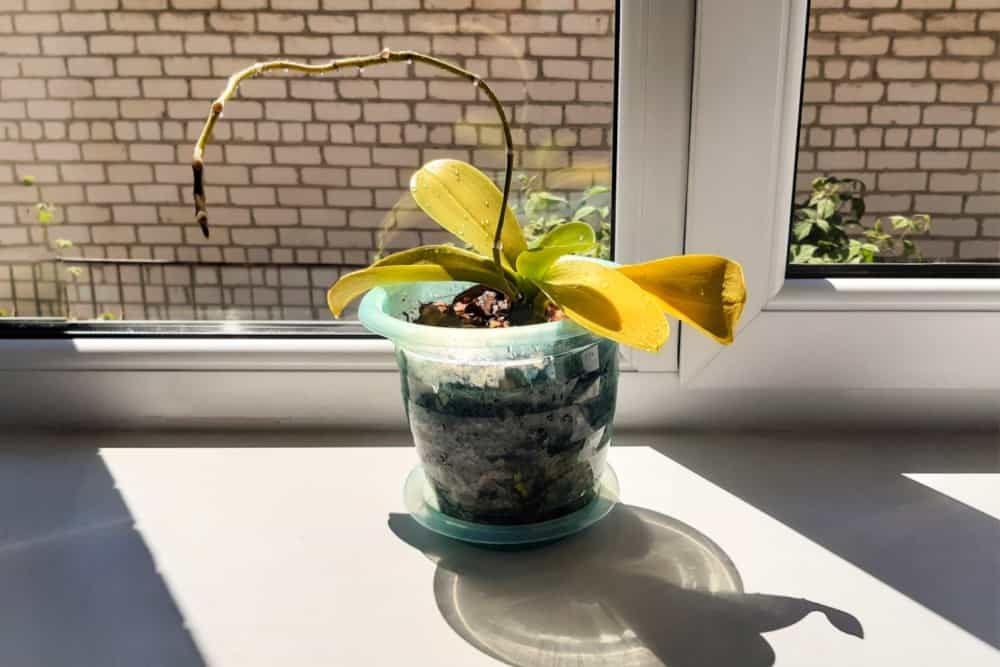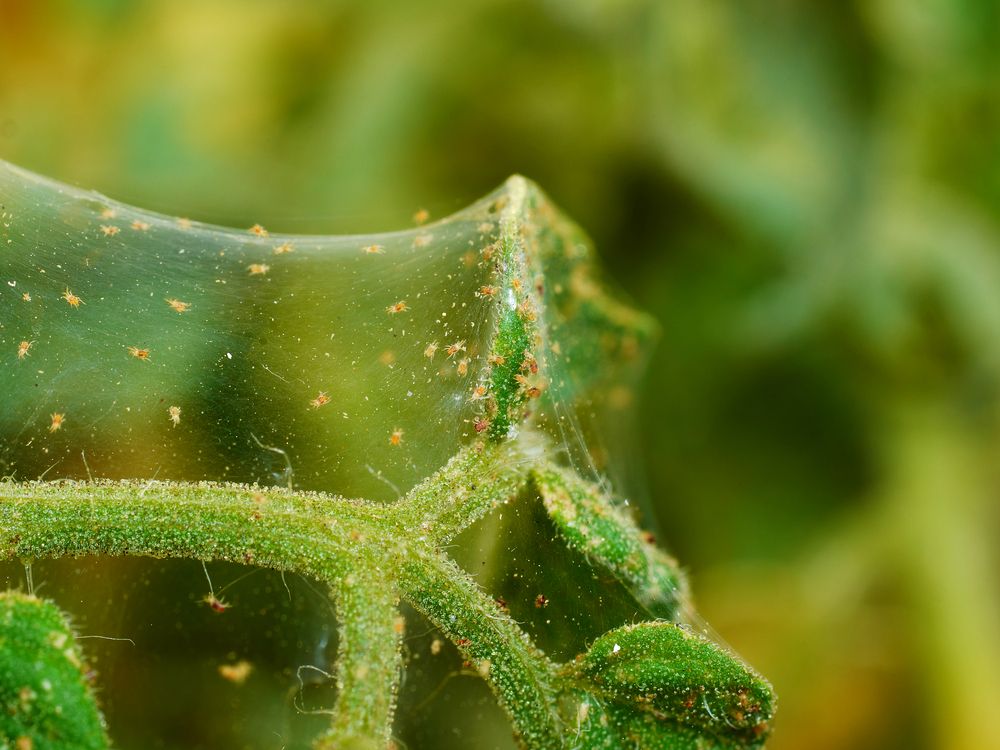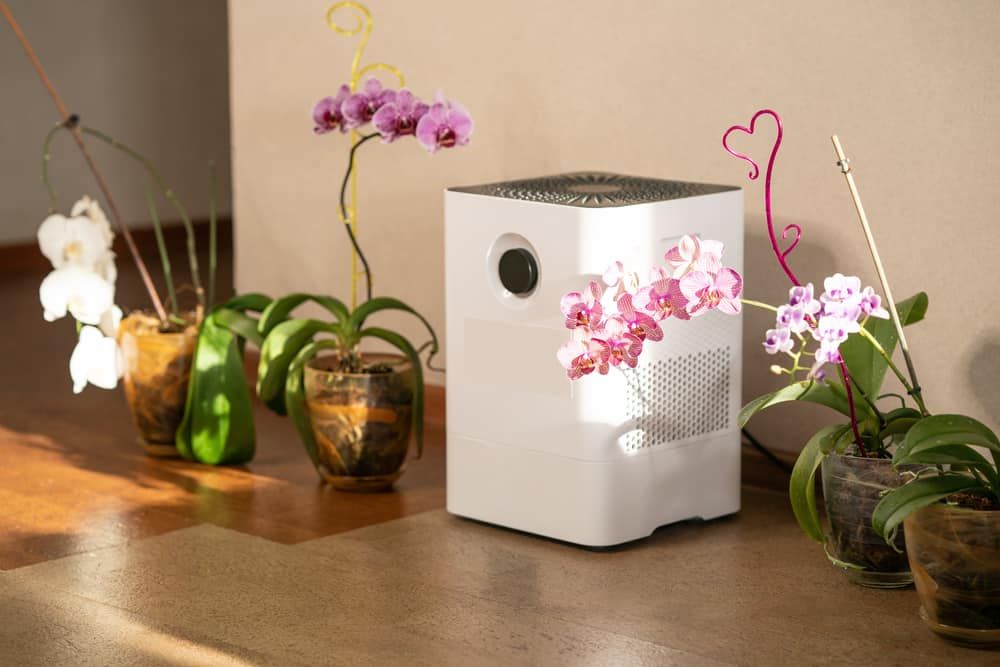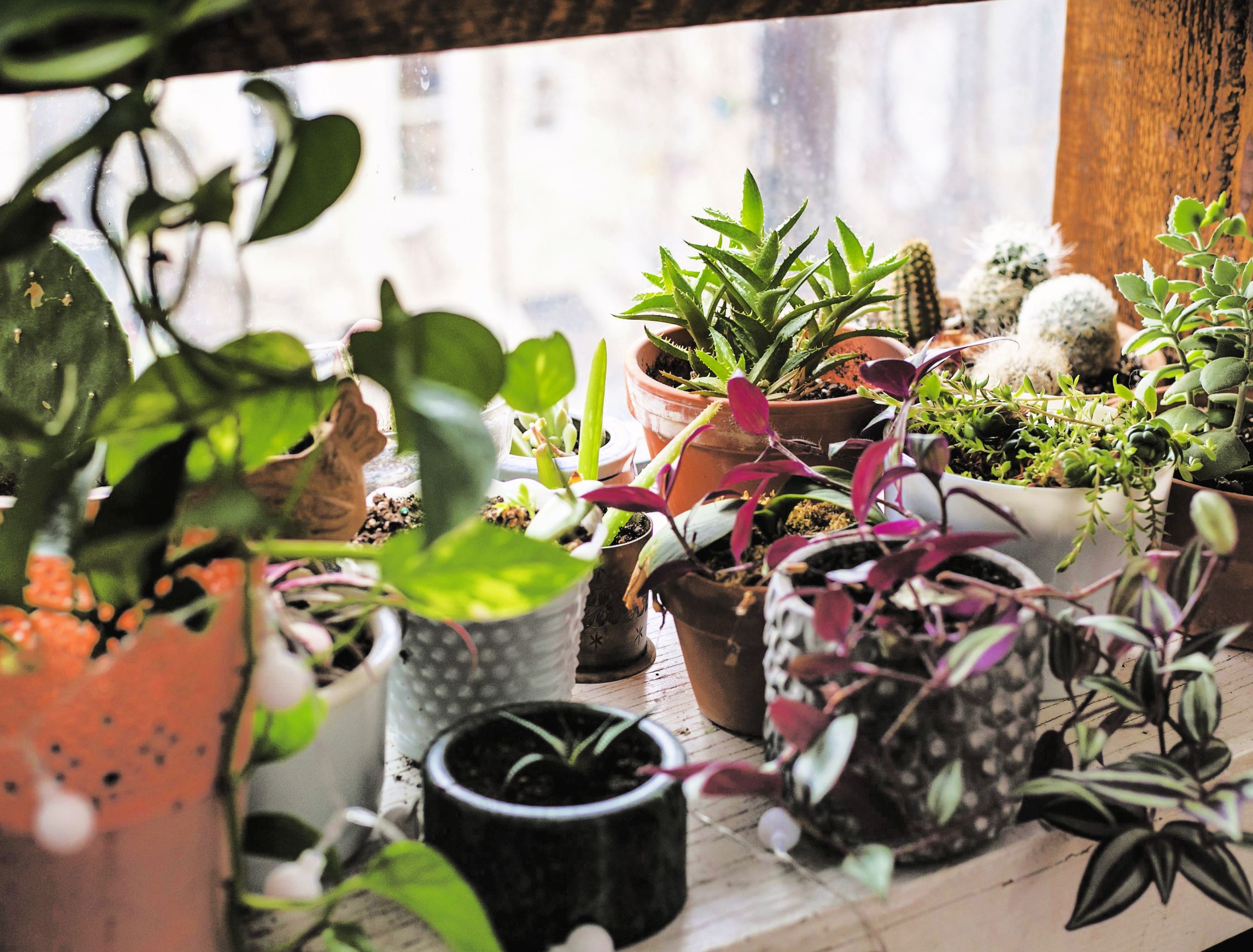If you're like most people, you probably think about the humidity level in your home strictly in terms of how it affects you. And while it's true that humidity can affect your comfort levels, it's also important to consider how humidity affects your plants.
Yes, different plants need different levels of humidity to thrive, but there is a general rule of thumb. Below you’ll find the answer to this elusive question, the consequences of having too high or too low humidity levels, and some tips on how to adjust the humidity level in your home so your plants can flourish.
Optimal Humidity Range for Your Houseplants
Image credits: D.L.Sakharova via Shuterstock
When it comes to keeping your houseplants healthy and happy, one of the most important factors is maintaining the correct humidity levels. This can be more challenging in dry winter when the heat inside your home is on, but with a little care and attention, you can keep your plants thriving no matter the season.
The first step to maintaining optimal humidity for your houseplants is understanding how this affects them. Different species have different needs, so it's important to research what plants you are growing and adjust as needed. In general, it's recommended that indoor humidity be between 40 to 60 percent. However, some tricky plants may need even higher or lower numbers for optimal health.
Consequences Of Too Much Humidity
Humidity is one of the most important factors to consider when caring for houseplants, as it can have serious consequences if not properly managed. When your plants are exposed to too much humidity, they can develop rot or other diseases that can be difficult to treat. It can ultimately result in the death of your plant.
Mold and Fungus
Image credits: Matt Gush via Shutterstock
Mold and fungus are common problems for many houseplants, particularly those that are grown in humid environments. This can be due to several reasons. Overhead watering, over-watering, or leaving your plant in a location with poor air circulation are common culprits.
Consequences Of Too Little Humidity
If you have plants in your home, it's important to keep them well-hydrated to ensure that they stay healthy and thrive. Without enough humidity, your houseplants may start showing signs of distress such as withered leaves and brown or black spots. If you notice any of these symptoms, it's time to increase your home’s moisture levels.
Brown and Dry Leaves
Image credits: Pencil case via Shutterstock
If your houseplants are showing signs of yellow, brown, dry leaves, and flower buds that are shriveling and falling off, then it's likely they're not getting enough humidity.
Without proper humidity levels, plants are unable to adequately absorb the moisture and nutrients from the soil, leading to a number of negative consequences for their health. Stunted growth is also a possibility.
Photosynthesis
Image credits: Damian Apanasowicz via Pexels
One of the biggest consequences of having too little humidity in your house is that it can cause your houseplants to dry out and become damaged. This happens when there isn't enough moisture in the air to keep the leaves from turning brittle and losing their green color. Without adequate humidity and moisture, your plants won't be able to photosynthesize properly, inhibiting their growth and development over time.
Spider Mites
Image credits: Floki via Shutterstock
Another result of too little humidity for your houseplants is an increased risk of developing an infestation of spider mites. These tiny arachnids survive in dry environments and thrive on the juice inside your plants. If you notice that your houseplant's leaves are starting to turn yellow, any white stippling on the leaves, or webbing, it may be due to a spider mite infestation. Immediately isolate the infected plant from your collection to avoid a spider mite feast.
What You Can Do To Adjust the Humidity Levels for Your Houseplants
Humidity levels are a key component for keeping your houseplants strong, but it can be difficult to figure out the ideal levels for each plant. Luckily, there are some things you can do to adjust your humidity levels, keeping your plants happy.
Tips To Improve Humidity
Image credits: Dina V via Shutterstock
There are a number of solutions to help increase moisture levels in your home. Your lifeless plants will soon thank you once they're in the proper conditions.
Start by misting your plants regularly. Not only will this help keep their leaves hydrated but it creates a more humid environment around the plant itself. Another great way to increase humidity is by grouping plants with similar needs together. Placing them all close together will create a microclimate, increasing the humidity level in that area.
Similar to a pebble tray, trays filled with water placed near your plants will help increase the humidity as well. Alternatively, you might also try using a humidifier in your home. This can provide moisture to the air around all of your plants simultaneously.
Tips To Decrease Humidity
Image credits: Shannon West via Shutterstock
Humidity is a problem for many houseplants. This is especially true during the hot summer months when humidity levels are at their peak. Luckily, there are several simple ways that you can decrease humidity levels and keep your plants healthy and happy.
One of the easiest ways to reduce humidity in your home is by using a dehumidifier. These handy devices work by pulling moisture out of the air. Thus helping to keep your indoor environment more comfortable and reducing the risk of mold growth.
Another option is to move your plants to a better, less humid location. This is especially important for succulents and cacti, which need less humidity than tropical plants. So, keep your plants out of humid rooms like the bathroom.
Optimal ventilation will aid in better air circulation, effectively reducing high humidity levels. If you see that the humidity in your area is higher than what is needed for your houseplants, try opening a window, turning on the AC, or using fans.
Finally, be careful of overwatering during hot and humid months. Plants need water not just from their roots, but also from the air around them. In fact, they can pull large amounts of water from the atmosphere alone! This ability means that overwatering is one of the biggest threats to your plants’ health. If you get too much water in your soil, you run the risk of creating mold or fungus issues that really weaken or even kill your plants.
Humid Resources
Plants need humidity just as much as people do. If your home has either too high or too low levels of humidity, it can have consequences for both you and your plants. Luckily, there are ways to adjust the humidity level in your home so that everyone- plants and humans alike- can be happy and healthy.
Make sure to share this article with your friends who also love plants (or who just want to keep them alive) and stay tuned for more gardening tips! Do you have any tips or tricks for keeping your houseplants healthy? Leave a comment below!

